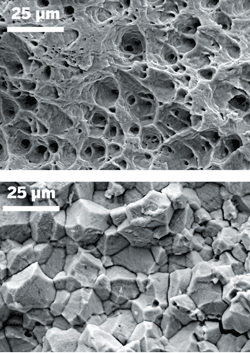(Please read yesterday’s Part 1 before this article.)
All of the agency representatives from the Navy, Seattle Parks, WA Dept. of Ecology and WA Dept. of Health at the meeting at the Mountaineer’s Club in Magnuson Park basically said the same things: There was never a great danger from the radioactive contamination, the contamination is being cleaned up properly and there will not be any danger when the cleanup program is done.
Representative Pollet begged to differ with the agency reps about what constituted a “safe level” of contamination to leave behind. He also raised the issue of exposure times. The agency people were working on a “recreational use” standard that said if someone used the park two hours a day for five days a week over the course of the year, their exposure would not endanger their health. The Navy was going to clean up the contaminated areas so that the exposure of recreation use would result in a 15 milliRem dose.
Pollet pointed out that a 15 milliRem dose could pose a health problem and that the EPA had rejected using that standard years ago. For comparison, the standard for the Hanford Cleanup was more stringent than that and it was basically an area of scrub grass along the Columbia River. The Hanford plan was based on ensuring low exposure for a residential area where someone might be outside for ten hours or more every day for a year. The irony is that there is low income housing in Magnuson Park and hundreds of people live there including children.
When pressed on the question of where the 15 milliRem standard came from, the rep from the WADoH said that that was the cleanup limit because it was impossible to cleanup any more than that because you could not detect radioactive contamination below the natural radiation levels in the area. Rep Pollet stated that that was not true and once again repeated that the EPA standards and the work at Hanford already require that lower levels of radioactive contamination be left behind at a cleaned up site.
There were a lot of questions about the safety of the people living in the low income housing who were being urged to grow their own food in pea patches in Magnuson Park. These people will definitely be in the Park for more than a few hours a day. The rep from Seattle Parks was very confident that there was absolutely no danger from growing food in the Park because the Parks Department had brought in outside soil for the pea patch garden area. Some in the audience were not reassured and pointed out that contamination from below the imported soil could be brought out by heavy rains and possibly drawn out of the soil by growing plants.
There were questions about the origin of the cesium and strontium that were also detected in the soil near one of the old buildings. The rep from Seattle Parks said that there could be strontium in the paint for the gauges in the planes. She also said that the cesium could have come from gauges. My research found that that strontium was not used in radioluminescent paint. Neither was cesium. An audience member suggested that the cesium and strontium might have been washed off planes returning from monitoring the testing of nuclear devices in the Pacific in the 1950s.
Rep Pollet and members of the audience demanded that a citizens advisory board be created and hold regular meetings with public access. If rep Pollet had not been there to counter some of the statements of the panel of “experts,” the audience would have left with the impression that experts agreed that the cleanup was going just fine. However, there are plans for the Navy to conduct a search of historical records and to do more testing in other areas of the Park in the future. There is no guarantee that all the contamination has been found.
One of the contaminated buildings at Magnuson Park:






